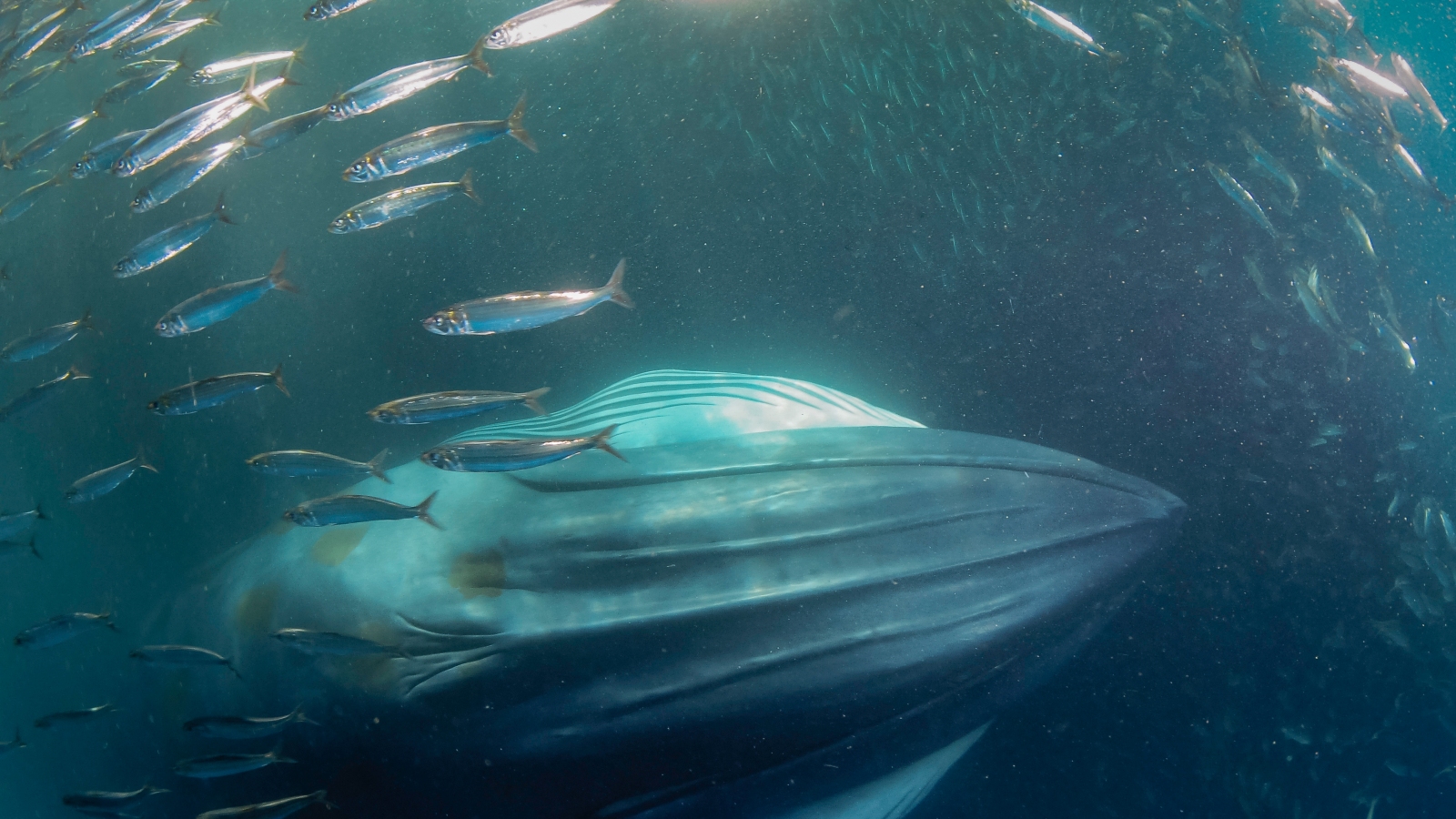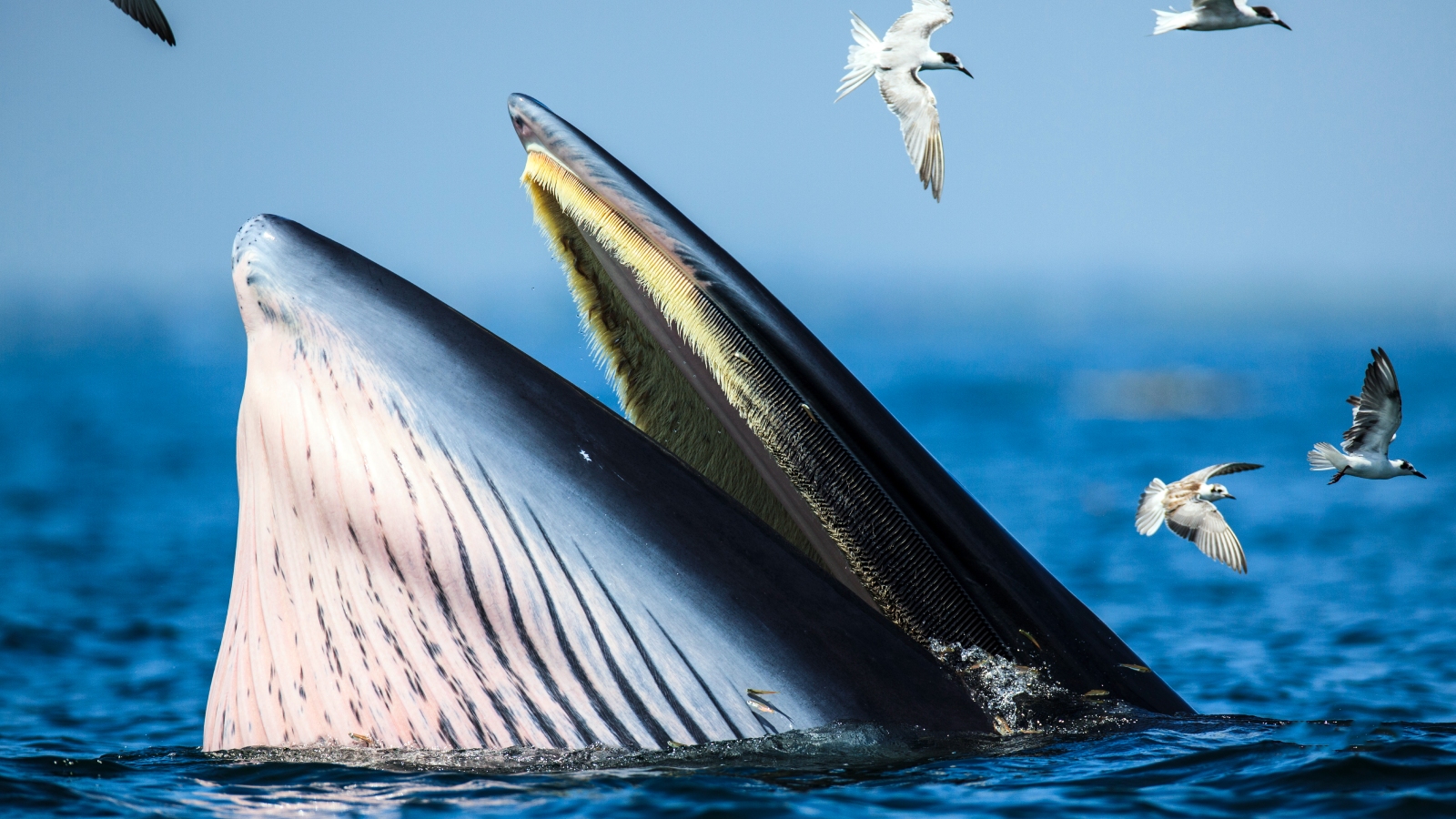
Researchers have finally identified the source of mysterious noises coming from the deepest ocean trench. The odd sounds, described as "biotwang" noises, sound a bit like sci-fi starships, and are actually whale calls from Bryde's whales (Balaenoptera edeni). The whales may use the calls to locate one another like a giant game of Marco Polo, researchers say.
Scientists first detected the unusual noises in 2014 while using underwater gliders to carry out an acoustic survey of the Mariana Trench — the world's deepest ocean trench, which spans more than 1,500 miles (2,400 kilometers) south of Japan and has a maximum depth of 35,876 feet (10,935 meters).
The biotwang sound can be broken down into two distinct parts: first, a low, grumbly sound that reverberates through the deep; and second, a high-pitched, metallic ringing that researchers have likened to the sounds made by spaceships in Star Trek and Star Wars.
The sounds initially stumped scientists. But in 2016, researchers revealed that biotwang was most likely a call from large baleen whales, such as blue whales (Balaenoptera musculus) or humpback whales (Megaptera novaeangliae). However, the sounds did not match any known whale calls.
In the new study, published Wednesday (Sept. 18) in the journal Frontiers in Marine Science, researchers were finally able to prove that Bryde's whales were making the noises, thanks in part to new artificial intelligence (AI) tools that sifted through over 200,000 hours of audio recordings containing various ocean sounds.
Researchers strongly suspected that Bryde's whales were behind the biotwang when they spotted 10 of the cetaceans swimming near the Mariana Islands and recorded nine of them making the distinctive noise.
"Once, it's a coincidence. Twice is happenstance. Nine times, it's definitely a Bryde's whale," study lead author Ann Allen, an oceanographer at the National Oceanographic and Atmospheric Administration's (NOAA) Pacific Islands Fisheries Science Center, told Scientific American.
But to conclusively prove that the Bryde's whales were the ones making the calls, the team matched the occurrence of the noises to the migration patterns of the species, which meant sorting through years of audio recordings captured by monitoring stations across the Mariana Archipelago and its surroundings.

They sped up that process by using AI to turn the biotwang into images, known as spectrograms, that could be easily differentiated from other noises by a machine learning algorithm.
The study also found that biotwang could only be heard in the northwest Pacific, despite Bryde's whales roaming across a much wider area, suggesting that only a specific population of the whales is making the noise.
The data also showed a spike in biotwang noises during 2016, when a rise in ocean temperatures caused by an El Niño event caused an increase in the number of Bryde's whales visiting the area.
It is still unclear why these calls sound so bizarre but researchers have a hunch over why they are being made.
"It's possible that they use the biotwang as a contact call, a sort of 'Marco Polo' of the ocean," Allen told Popular Science. "But we need more information before we can say for sure."







